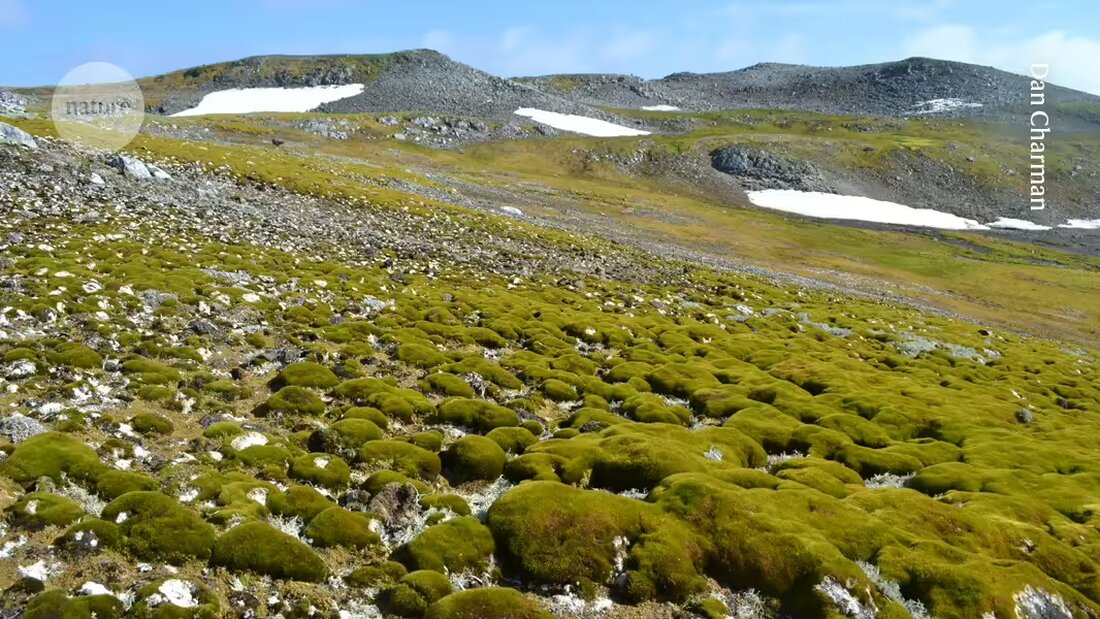Believe it or not, this lush landscape is Antarctica
A rapidly growing green space in Antarctica is showing surprising changes. Satellite images document a nearly 14-fold increase in plants over the last 35 years.

Believe it or not, this lush landscape is Antarctica
One rapidly warming region of Antarctica is getting greener at an alarming rate. Satellite images show that the area covered by plants has increased almost 14-fold in the last 35 years - a trend that has led to rapid changes in the Antarctic ecosystems will lead.
“It's the start of a dramatic transformation,” says Olly Bartlett, a remote sensing specialist at the University of Hertfordshire in Hatfield, UK, and co-author of the study published today in Nature Geoscience 1, which reports these results.
From white to green
Bartlett and his colleagues analyzed images taken between 1986 and 2021 of the Antarctic Peninsula - a part of the continent that extends north toward South America. The pictures were taken by Landsat satellites by NASA and the US Geological Survey in March, the end of the growing season for vegetation in Antarctica.
To determine how much land was covered by vegetation, the researchers used the properties of growing plants: Healthy plants absorb a lot of red light and reflect a lot of near-infrared light. Scientists can use satellite measurements of this light to determine whether a piece of land is covered by thriving plants.
The team found that the area of the peninsula covered by plants has grown from less than a square kilometer in 1986 to almost 12 square kilometers in 2021 (see "An Icy Land Goes Green"). The expansion rate between 2016 and 2021 was approximately 33% higher compared to the entire four-decade study period.
“These numbers shocked us,” says Thomas Roland, a co-author of the study and an environmental scientist at the University of Exeter, UK. "It's just this rate of change in an extremely isolated, extremely vulnerable area that raises alarm."
The research is “really important,” says Jasmine Lee, a conservation scientist with the British Antarctic Survey in Cambridge, United Kingdom. Other studies 2, 3 have found evidence that vegetation on the peninsula is changing in response to climate change, "but this is the first study to take a large-scale approach to look at the entire region," she says.
The authors' previous visits to the peninsula led them to believe that most of the plants are mosses. As mosses spread across landscapes previously covered by ice, they will build a layer of soil that provides habitat for other plant species, Roland explains. “There is great potential here to see a further increase in the number of non-native, potentially invasive species,” he says.
This is concerning because Antarctica's native flora is adapted to extreme conditions and may not be able to compete with an influx of other species, Lee says.
The researchers attribute the change in landscape from white to green to climate change. Temperatures on the peninsula have risen by nearly 3°C since 1950, a much larger increase than has been observed in most other parts of the planet. The “phenomenal” rate of vegetation expansion, Roland says, highlights the unprecedented changes humans are imposing on Earth’s climate system.
-
Roland, T.P. et al. Nature Geosci. https://doi.org/10.1038/s41561-024-01564-5 (2024).
-
Royles, J. et al. Curr. Biol. 23, 1702–1706 (2013).
-
Amesbury, M.J. et al. Curr. Biol. 27, 1616–1622 (2017).

 Suche
Suche
 Mein Konto
Mein Konto
